Worm
composting is simple
Learn all
you need to know to become a successful worm farmer…
Worm composting also known as worm farming has continually gained popularity in recent years! It is a simple but effective way to
convert organic materials that would usually be dumped at landfill sites into nutrient rich soil conditioners with the help of compost worms.
It is our intention to supply you on our web pages with all the information you need to become a successful worm farmer and recycle all your kitchen waste and garden scraps. Having recycled all our kitchen scraps and those of many other households for many years now we are totally sold out to the concept of worm farming.
What is worm composting
Find out about the tremendous benefit's earthworms and worm farming can have for your garden soil, plants and the environment!
You might ask yourself...
- How can I make money with earthworms?
- Where can I get worms ?
- What do worms eat ?
- What is a worm bin ?
- How do I make a homemade worm bin ?
- where can I buy a worm bin ?
- How do I set up and maintain my worm bin ?
- What kind of worms must I use ?
These are just a few of the
questions I regularly hear from people new to the wonderful world of
worm composting!
After many years of running a worm farming business I am creating this website to assist everyone who wants to start recycling organic waste with the help of earthworms or compost worms!
If you have a question about worm farming that has not been covered on our website yet, please forward it to us we will do our best to answer it for you!
Worm composting can be fun and has a positive impact on the environment.
Worms recycle organic waste and convert it into nutrient rich worm castings and worm tea.
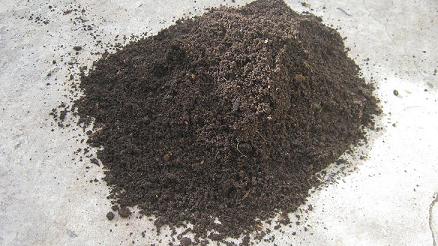 Fresh worm castings are a fantastic organic fertilizer
Fresh worm castings are a fantastic organic fertilizerWorm castings and worm tea are amongst the best soil conditioners and organic fertilizers known to man.
They improve soil structure and act as natural pesticides.
Many keen fishermen grow earthworms in worm bins and use them as fishing worms to hook their favorite freshwater fish.
Vermiculture is used by many avid gardeners to replace or complement traditional composting. It is a low maintenance, easy process, and produces an excellent plant food that will slowly release its nutrients to flowers, trees or vegetables.
Are you tired of rotting, stinking dog poop in your garden or dust bin ?
Use compost worms to recycle your best friend’s droppings and use the finished worm castings to improve your lawn or flower beds !
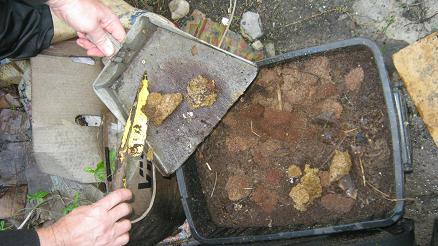 Compost worms convert dog poop into plant food.
Compost worms convert dog poop into plant food.Follow the simple rules and have fun as a worm farmer! Boy or girl, young or old, hobby gardener or large scale farmer the list of people that are getting hooked by the "worm" is growing rapidly and turning into a global movement!
----------
"Start worm composting as a hobby and turn it later into a profitable business."
----------
No matter what your reasons are to start composting with worms, just as a hobby or
with the intention to create an income... It is my goal to help you enjoy the road ahead and become a successful worm farmer!
So good luck and Happy Worming!
----------
-----------
-----------
---------
Natural way to clean a clogged drain
----------
For questions or suggestions please contact us!
----------
Worm Farming a good Green business idea
-----------
10 reasons to start a worm farm
------------
-----------
-----------
-----------
-----------
Your Questions about worm composting?
Do you have any questions or suggestions about worm composting?
This is the place where you can interact with us and other worm composting friends!
What Other Visitors Have Said
Click below to see contributions from other visitors to this page...
Moisture control in continuous flow worm bins. 




With setting up a series of continuous flow bins I am having a challenge with managing the moisture, as the worms seem to dwell in the bottom of the bin, …
What are these little guys in my worm castings? 




I was gifted some worm castings with compost and found thousands of these tiny guys inside. I'm new to this. Can you help tell me what they are?
Starting a worm composting business 




I am Nimal from Sri Lanka and 58 years old. In two years' time, I will be retired. So I would like to start this worm composting fertilizer production …
Springtale Problem in my worm bin 




Please help,
I have millions of Springtails in my worm bin (it looks infested). I know they are not of any harm to the worms but the customers do not …
red wigglers 




Hello Stephan,
I am successfully raising and selling worms in Israel. Your book is in my library-right next to Darwin's "Earthworms". I would appreciate …
Looking for worms at night. 




My friend wanted to know if she could look for worms at night time? And how wet does the soil need to be for the worms to come out? She also wanted to …
Watching worm-composting-help.com without Adblocker? 




Como se llamo esto i am from SPAIN.
I registered a long time ago. Can I see this website without adblocker?
thanks )
Very few worms left in my worm farm 




I have had my worm farm for several years, but lately, I’ve seen less and less worms. Do I need to add more? Would something cause the population to …
Worm composting for apartments 




I live in a small apartment and the systems shown online look very big. Do you have any recommendations for small compact systems?
worms want to crawl out of new worm bin 




My worms arrived 1 week ago. They are doing great except they want to crawl out of the composting bin in the dark. I am keeping a light on them in the …
Worm harvester Nachbauen 




Ich habe dein Buch und finde deinen Worm harvester super. Gibt es eine Anleitung zum Nachbauen?
Ben,
der wesentlich besser Englisch lesen als schreiben …
Treated dog hair in my worm farm 




I have put some dog hair (along with some other items) in my worm farm and overnight I had my first mass escape of worms. I then remembered that my dog …
Wanting to buy red wigglers in Nigeria 




I would like to buy 5kg of Red wigglers in Nigeria. Please how can your organization help. Thank you.
Dog poop and cat poop for a worm bin? 




Why only dog poop and not cat poop? We have cats too and all that is in the litter box. Can we use cat poop?
Will mostly brown waste work in a worm farm? 




Hi, I have been searching the web high and low for an answer to a question I have and I was hoping you could help me! I am on a small acre hobby farm …
Funny creatures with tails in my worm farm 




Hello I found these strange looking pupae in my worm bin a few days ago, at first I thought that they were rats droppings wonder if you could help me identify …
Worms eat oranges and orange peels 




People in many books as well as worm composting forums have often been warned that one should never feed Citrus fruit peels or parts of them like lemons, …
Worms clumped together at the bottom of my worm bin? 




I received the following question from Marischka...
Question:
Worms clumped together, not because being food there, or it being cold…?
While …
Worms have disappeared from my worm farm? 




We have had a vibrant earthworm farm for many years which we bought as a start up from a reputable supplier and followed all the procedures and enjoyed …
Compositing Worms Needed 




Hello
I live in the Kingdom of Bahrain and I would like to start a worm farm. Can you please direct me to where I can buy/import worms from?
Many …
Can I get worms in Saudi Arabia? 




Comment: I have a compost and need some worms. I live in Riyadh in Saudi Arabia and have not yet seen one in my garden although I have lived here for nearly …
Worm farm near Hannover and Germany 




Hello I´m interested in worm composting, and I would like to see a worm farm before I purchase it. I will travel to Hannover, in Germany this week. Will …
Survey about worm food. What do they eat?, How much and how often? 




My name is Leo, I am now doing a survey about the earthworm. It would be grateful if you can provide some information about earthworm farming. Thank you …
Feeding manure to worms 




I have concerns feeding my worms dog and horse manure. Many years ago (1976) or around then, I knew a person that fed his worms his neighbors horse manure. …
How to get worms to reproduce quickly 




Hello Hina
I have bought you book "How to start a profitable worm business on a shoestring budget" and I am very pleased I did!
I would like to …
The worms in my bin become deformed and then die 




So the first parts of the worms in my bin were swollen then parts of them looked almost deflated. After a few days they died? Am I starving them or are …
European Nightcrawlers disappeared from my worm bin 




Comment: Hello, I'm new to worm composting. Have made some mistakes but have been able to make my worm farm successful. I thought the initial problem was …
Worm suppliers in Thailand? 




Hello I want to import earthworms and worm cocoons from Thailand.
Please provide me a list of sellers of worms and worm cocoons that could possibly …
Einige Würmer sehen abgeschnürt aus und sterben 




Hallo Stephan,
Sie haben ein tolles Buch über die Wurmzucht geschrieben, sehr anschaulich und praxisbezogen. Es ist mein Ratgeber. Als Testbetrieb habe …
Separating baby worms from mature worms 




Hey Stephan,
I'm not sure if you remember me writing you but your assistance helped me greatly. Just about a week ago I looked over at the box in …
Questions and answers about starting a profitable worm business 




Comment: I have bought your book "How to start a profitable worm business on a shoestring budget". And I loved it. I read another book called "Commercial …
Earthworms are dying! String of pearls disease? 




Hello,
I have been involved in worm composting for many years now and worked mainly with Eisenia Fetida worms and more recently with Dendrobaena Veneta …
Keeping earthworms in a glass container? 




Hi.
I know worms need humidity to breath. Would it work to keep worms in a closed glass container in a dark room with red light if you ensure air …
Finding African Nightcrawlers in South Africa 




Comment:
Hi Stephan I am from Zimbabwe and been a keen worm farmer and teacher for many years . In fact my nickname is "Willie Worm" and I have …
5 gallon buckets / 20 liter buckets to raise worms? Cardboard powder as worm bedding? 




Comment: Hello, I purchased your book "How to start a profitable worm business on a shoestring budget" and I have a few extra questions.
1) do you …
Snails are breeding in my wormfarm 




Hello I love recycling my food waste in my worm farm but recently I noticed that there are lots of small snails - round and longish in my worm bin! How …
Getting rid of Gnats and mites in worm farm 




Hello Stephan.
Flies and gnats have invaded my worm farm. Please find pictures attached.
You have recommended elsewhere in the forum reducing the …
Did I kill most of my compost worms? 




Hello!
Thank you for the info on worm composting! It was more helpful than any other information I could find. I still have a few questions.
I have …
Thanks for writing your book "How to start a profitable worm business on a shoestring budget!" 




Dear Stephan,
I want to let up know that I bought your book along with a lot of other worm farming books, as this is something my wife and I wish …
fruit flies in my worm farm and no worm tea?? 




Question:
My worm bin has hundreds of fruitfly (Drosophila melanogaster) in and around it. I put in quite a lot of fruit peelings like paw-paw skins …
Can worms recycle hair? 




Hi there!
Im David from Malaysia.
I have a small scale worm farm at my backyard and they are doing pretty well. Eating kitchen scraps and making …
How to start a worm farm on a landfill site? 




Hi
our company is new in the recycling business, well actually we just started. We
where approached by the local municipality. They want us to start …
What to do if I can't attend to my worm farm for a longer period of time? 




Hi Stephan, another question please - what does one do when one goes away and there is no one at home who can take care of the worms in the worm farm? …
Wurmtee im Winter? 




Hallo, ich betreibe eine Indoor Wurmkiste und ernte das Wurmwasser normalerweise einmal wöchentlich.
Was kann ich eigentlich mit dem Wurmwasser im Winter …
Worm farm bedding has become very, very wet and smelly?? 




Quoting Katarina
> Hello Stephan,
>
> I hope you are well.
>
> I seem to be having a small problem with my worm farm... in the last week it
> …
Feeding animal carcasses to worms 




Hi my dear friend
I am looking into the production of worms.
The worms that we want to produce are supposed to be used for the treatment of a disease. …
How to get ants out of a worm farm? 




Question:
Hi Stephan--
Do you have any good tips for getting ants out of the compost? I realized today
that I have a mega ant factory in my worm …
Maggot INFESTATION 




Hi there
My worm farm is infested, as in INFESTED, with big fat maggots. Besides the fact that there are far too may of them, there is no way I'm taking …
Earthworm supplier in Namibia 




Hello where can I buy earthworms in Namibia? Ideally close to me in Swakopmund?
Answer:
Good day Jerolien, thank you for your interest in worm …
Unwanted creatures in my worm farm? How do I use worm tea? 




Hi Stephan
Long time to see.
However the reason I'm e-mailing you is the two pictures attached. Since
years of having your wormfarm bins I also …
Gnats in my worm farm 




Hi There
I have a big problem with my worm bin. It seems to be a breeding ground for gnats.
How to i manage this?
Another problem I have is …
Can we add more worms to our worm bin? 




Good day Stephan
Hope you are well.
I want to find out if we can put more worms in our worm farm, We have a lot of kitchen waste that we produce …
Search for African Nightcrawlers - Eudrilus eugenia 




: Hello!
I am a scientist/microbiologist and am very urgently looking for Eudrilus eugeniae (African nightcrawler). Because of very strict import rules, …
Maggot infestation in my worm farm! How can I get rid of them? 




Hi Stephan - I bought some worms from you at the end of last year.
I am having a problem with maggot infestations in the worm farm resulting
in the worms …
Baby worms get half eaten! :( 




Hi,
I have a Box with European Nightcrawlers standing in my yard for 2 months now. The adult worms seem fat, fast and strong and they eat and mate actively. …
where to buy the worm in Sri Lanka 




Rajpal from Pandura sent us the following question:
Where can I buy the worms in Sri Lanka?
Answer:
Hello Rajpal, thank you for your question. …
vermicompost business 



Mohsen from Iran send us the following inquiery.
Hello
I am a vermicompost farmer in Iran
I have several 100 tons of vermicompost / worm castings …
Worms seem to have whiter and hard looking innards Not rated yet
Hi,
I've recently harvested and sadly many of my worms have vanished, I presume died and dried up. Besides the more obvious reason, I wonder if the …
Problems in worm farm! Whiter and hard looking innards Not rated yet
A lot of the worms are whitish, as if there is some process going on inside of them. Below is the best pic I could get without a harsher light (0.jpg), …
Worm castings for Koi babies Not rated yet
Worm castings have many uses and benefits. It is well known that they are used to enhance, condition and fertilize soil. They are in fact an amazing organic …
Usefulness of worms in the soil Not rated yet
Scientists and farming experts are aware that worms have an important role to play to promote the multiplication and growth of plants in the soil. Aristotle …
Worms eat dead birds Not rated yet
Worms eat dead birds in no time! We do have a lot of birds in our garden and I love to wake up to their beautiful songs. We are living in Cape Town and …
Snails, slugs and worms in a container garden Not rated yet
Snails and slugs can cause problems in container gardens and cause lots of damage to to young and tender plants, once they found access to the plants. …
Old corncobs germinate in a worm bin Not rated yet
In the photo I attached to this message you can see an old corncob with lots of germinated seedlings growing out of it.
It had been lying for some time …
Overfeeding worms? Not rated yet
According to my knowledge there are no clear cut laws written down about the amounts of food worms should receive, but adding to much food to a worm bin …
Can worms be kept in a bathtub? Not rated yet
One of the questions I receive regularly from worm composting enthusiasts is if old bathtubs would make a good worm bin container? And the simple answer …
Protecting worms against hot and cold weather Not rated yet
Compost worms (Eisenia fetida) known by many names Red wriggler being one of the most commonly used ones are pretty hardy creatures and can tolerate a …
Growing worms and a Carolina Reaper plant in the same bin! Not rated yet
Growing Worms and the Hottest Chilies in the world (Carolina Reaper) together in one Bin! (Part 1)
This was the first Carolina Reaper fruit pod of many …
Worms died! What other creatures have taken over my worm farm? Not rated yet
I have had my worm farm for 5 years now and has been fabulous but all the worms have recently died and the worm farm has been taken over by another type …
Growing herbs in a worm farm (Herb-garden-worm- bin) Not rated yet
Growing herbs in a worm farm is a great way to killing several birds with one stone! Firstly recycling organic materials that would otherwise have gone …
Worms in an aquaponics system Not rated yet
Another great way to use compost worms is to add them to an aquaponics system. This way you can kill several birds with one stone :-)
Add worms to …
Chard and other vegetables are growing amazingly well in soil enriched with worms and worm castings Not rated yet
Worm castings have an amazing ability to improve the fertility of even the poorest of soils. When we moved into our home years ago the soil in our backyard …
Worms can survive for long times in a neglected worm farm or old worm castings Not rated yet
Worms are incredible survivors and really can be left unattended if the environmental conditions inside their bin are in good order. As long as their bedding …
How to start a worm business? Not rated yet
Comment:
Hello I'm from Israel and just found out about this amazing stuff called worm farming... I work in a greenhouse but its not mine. So I thought …
Can I just go and pick up a bag of manure for my worm farm in a store? Not rated yet
Hello,
I'm not sure if you answer questions from people who read your book "How to start a profitable worm business on a shoestring budget" and if not …
Soaking horse manure before feeding it to compost worms? Not rated yet
Comment:
Good day Stephan, I'm enjoying reading your book "How to start a profitable worm business on a shoestring budget."
We have a ready …
Wet worm bin? Very wet worm castings? Not rated yet
Hi
I have been keeping worms for a good few months now and I have initially used newspaper and cardboard for the bedding.
I feed them a variety of chopped …
Worm leachate vs. Worm tea Not rated yet
Question:
Can I just tap off the liquid from the bottom container of my worm farm and use the liquid from it like that on my plants or do I have to …
I want to buy the book "How to start a profitable worm business on a shoestring budget" Not rated yet
Hi I am very interested in starting a worm business or even a black soldier fly business and want to buy your book "How to start a profitable worm business …
Exporting compost worms to the United States? Not rated yet
Hello again, can you ship worms from South Africa to Ohio with no problems. If so how many US dollars for 2000 adult worms and 2000 that will grow in to …
Should stackable worm breeder boxes have a drain Not rated yet
Stephan,
Thank you so much for your thoughtful response. Based on your input, I am going with another model of bin that is a bit deeper than what I …
Worm breeder boxes - which size is correct? Not rated yet
Hi,
I recently purchased your book on kindle. It has a lot of great information, and I've enjoyed it. For some reason, however, most of the images …
Industrial size wormery Not rated yet
Hello Stephan,
I hope you are well.
I'm writing to you because a friend of mine is looking for an industrial size wormery have you got any recommendations? …
Snails in my worm farm. What should I do? Not rated yet
Hello there are snails are breeding in my worm farm! It looks as if there are millions of small snails - round and longish in my worm bin ! How can I get …
Which worms should I use for my worm bin? Not rated yet
I do NOT like red wigglers!
Someone said regular earthworms die if confined in pots or compost bins.
Where can I get regular earthworms for starting …
How to get rid of maggots and flies in my worm bin Not rated yet
Question:
Hi there
I chatted to you earlier today - I've had a mini (three levels) worm farm for seven days. I followed the instructions but this …
How to keep my worms alive Not rated yet
Hi I have some kariba worms at home can u give me some advice how to
look after then and best way to keep them,I am a fisherman and one of my
buckets …
Ordering additional worms for my worm farm!!! Not rated yet
Good day M.
to get the worm heaven worm farm run at full swing you will need approximately 4000 worms + which would cost you considerably more than …
Questions about breeding earthworms Not rated yet
Comment: Hi,
I recently purchased Stephan Kloppert's book "How to start a profitable worm business on a shoestring budget" and am ready to give it …
My worm farm bedding is to wet and my big worms have disappeared? Not rated yet
Hello
I bought my single bucket worm farm from you. I've read the FAQ on your website but have run into a problem and need some advice.
My red worms …
Will the worms arrive alive? Not rated yet
Dear Stephan,
Thank you for your email. I will deposit the amount for the worm farm into your account tomorrow.
I would like to know how you send …
Problems with my worm farm Not rated yet
Hello I am a bit worried about my worm farm. There are quite a lot of little flies? It looks not very nice. Is there not enough air in the worm farm because …
How many worms do we need to recycle 300kg waste per week Not rated yet
Question
Hi! We were looking at various options of converting food waste at Monash University Malaysia into fertilizers. We urgently need to find out …
worm farm for our Science Education centre Not rated yet
Dear global worming staff
We would like to have a worm bin at our Science Education Centre at ourUniversity. We do generate kitchen waste but probably …
Which worm farm should I buy? Not rated yet
Hi there
Please can you advise as I would really like to purchase one of your products. I am a two person household with a relatively small garden. The …
Worm food? What should I not feed to my worms! Not rated yet
Good day Stephan,
I have collected my bins today, thank you very much!!!
Just a quick question:
Is there some foods that we should avoid feeding …
Recycling with worms on a large scale Not rated yet
Good day
I would like recycle large quantities of food waste and other organic materials with the help of earth worms. Thats why I would like to find …
Wurmhumus nach Deutschland exportieren?! Not rated yet
Sehr geehrte Damen und Herren,
Ihre Infromationen über die Wurmkompostierung sind ausgesprochen hilfreich. Wir haben eine kleine Farm in Bulgarien, …
Can granular ant baits be dangerous for worms and humans? Not rated yet
Hi I have a worm bin under my house that's was going great. My worms where recycling organic waste in large quantities. Now reverently ants raided the …
How fast can worms eat and recycle grass? Not rated yet
Hi, I just bought your book "How to start a profitable worm business on a shoestring budget."
I'm evaluating the business of taking garden waist out …
how do I fatten up my red worms and increase my inventory Not rated yet
How do I fatten up my red worms and increase my inventory?
Answer:
Hi Ron, I trust that you have been recycling organic materials in worm farms for …
worms dying and on the walls of my worm bin Not rated yet
Hi Stephan
Hope you are well
I have a worm problem. My worms are dying!
I went away for the weekend and when I came back I noticed that the worms …
I can't see my worms Not rated yet
Hello! I have a worm farm and I can see big maggots but no worms. My farm doesn't smell, I've followed all the rules EXCEPT that the farm hasn't been …
Free troubleshooting helpline about worm composting Not rated yet
Hello Stephan,
Just to let you know that I collected my worm farm today. The worms seems to be in good health. :-)
On your website you mention "free …
How to build a cheap worm farm! Not rated yet
To whom it may concern,
My name is Helga and I volunteer for an environmental education center in a
township in South Africa. We aim to educate the …
Problem with my worm farm! All worms died! Not rated yet
Good day,
I recently replaced the old bedding in my bin with store-bought compost.
Every single worm I had died within a day. Do you perhaps know what …
Noch eine Frage zum Wurmtee Not rated yet
Hallo, noch eine Frage zum Wurmtee. Wie sinnvoll ist es, aus einem Rest von einem fertigen Wurmtee einen neuen anzusetzen, in dem ich Melasse, Wasser …
Unkraut und Gras in der Wurm Farm recyclen? Not rated yet
Hallo, wenn ich Unkraut und Gras aus meinen Beeten entferne, erhalte ich sozusagen die ganze Pflanze mit dem Grün, den Wurzeln und auch Erde, in meinem …
Help there are maggots in my worm bin!! Not rated yet
Hi Stephan,
I need help.
My worm farm has been going fine I am using the dogs poop.
Somehow I think from flies sitting on the poop I have maggots …
We want to recycle our dog poop! Not rated yet
Hi Stephen
we actually compost all our veggies with a worm farm but now want to compost and recycle our dog poop too. We have 2x large dogs and 1 x …
Instructions to maintain your worm farm Not rated yet
Hello Jeany,
please find attached the instruction sheet for your midi tower worm farm.
For more information about worm farming have a look at my …
Is the bedding of my worm farm to wet? Not rated yet
Hello I have purchased a Midi Tower worm farm from you a few month ago and all seemed to be going well. Today I checked the worm compost for the first …
Why did my worms die in my worm farm? Not rated yet
Hi Stephan
I don’t know what went wrong but all my worms must have died on me as nothing left in the box when i checked.. not sure what went wrong as …
What is the retail value of worm tea? Not rated yet
Good day....I have a worm farm and would like to sell the worm tea.
What is the retail prize?
I would be grateful if you could give me an indication. …
worms and worm farms delivered to any location in South Africa Not rated yet
Hello Jade,
yes we do deliver our earthworms and worm farms to any location within South Africa.
Your Midi Towers and Pet poop processor worm farms …
Black soldier fly larva infested my worm bin Not rated yet
Hi Stephan,
I bought a Midi worm farm from you last year, and after a few delays
(postal strike), I received my farm and it really went well for a couple …
Soldier fly maggots in my worm farm Not rated yet
Hello.
I wonder if you can help me. It looks that soldier fly larva have
taken over my worm bin. It looks like a lot of the worms have died. Any …
Funny creatures in my worm farm Not rated yet
Hello ,
I had me worm now for a few weeks. A few days ago I added some Watermelon rind to the farm and found today that there are lots of small round …
Ants, Ants, ants in my worm farm Not rated yet
Hi there
I sent you an email today regarding tiny ants that are now taking over the worm farm. How do I get rid of them? Will they eat the worms? …
Composting worms in India? Not rated yet
Hello my name is Govind
and I am from India. I want to buy some worms for my home to start a worm farm and produce some worm castings.
Where do I …
African Nightcrawler in Deutschland? Not rated yet
Hallo
wir suchen nach einem Lieferanten im deutschsprachigen Raum oder einem anderen Land in Europa der uns mit "Eudrilus eugenie" Würmern versorgen …
Sending worms by mail! How many worms in a box and how much bedding ? Not rated yet
Comment:
Hello,
I have your book "How to start a profitable worm business on a shoestring budget" and am implementing most of your ideas.
Got …
How big should the worm farm be? Not rated yet
Hello,
we are running a hotel for dogs which produces about 32 liters /8.5 gallons of dog poop per week.
How much space should we allocate to a …
Worm castings from recycled dog poop Not rated yet
Hello
I started a worm farm 3 month ago and am feeding my worms only dog poop which they are recycling for me. The worms seem to be thriving and lots …
Illustrations about worm composting Not rated yet
Hello,
I am a Design and Product management student and writing my masters thesis about solving the problem of food waste with a worm composter.
I …
Do composting worms leave their worm farm? Not rated yet
Hello,
I would like to know if compost worms are often leaving their worm farms?
For your assistance I want to thank you in advance
kind regards …
Rote Kalifornische Würmer für meinen Garten kaufen. Not rated yet
Sehr geheerte Damen und Herren,
ich möchte bei ihnen Rote Kalifornische Würmer für meinen Garten kaufen. Bevor ich die Würmer bestelle möchte ich gerne …
In which countries can large scale worm farms be found? Not rated yet
Question:
Hello,
can you tell me in which countries large scale worm farming has been implemented and what kind of positive results have been achieved.? …
Can I leave my worm farm unattended for several weeks? Not rated yet
For how long can I leave my worm farm unattended before the lives of my worms might be threatened?
Due to my line of work I am quite often away from …
Can I recycle compostable dog poop bags in my worm farm Not rated yet
Hello!
I am considering to start a Dog poop worm farm in addition to our existing compost heap.
We want to stop throwing dog poop into our garbage …
A few tips on how to take care of a worm farm Not rated yet
We received the following questions about worm farms and what conditions they should be in.
"Hello Stephan, thank you so much for your information. …
Do you have to turn worm compost Not rated yet
Hello,I just realized I had one more question...Do u have to turn worm compost like
you do other types of compost piles.?
Thank you for your quick …
What are the advantages of 3 tier worm bins? Not rated yet
Jeremy sent us the following message:
Hi,
yours is a great site - thanks for putting it together.
I have a couple of comments:
1) on your FAQ page …
Can I feed rabbit droppings to my worms Not rated yet
We received the following message from Deryn!
Hi Stephan,
Just to let you know the worms have arrived safely in Paarl and are in their new home! …
Worm farming business an idea from God! Not rated yet
I received the following moving message this weekend:
"Good day,
I recently learned that after nearly 30 years a the same work place, I will be losing …
Compost worms in Malaysia Not rated yet
Santosh from Malaysia,
wrote us the following message:
"I want earthworms for vermicompost."
Answer:
Hello Santosh,
thank you for …
"How to start a profitable worm business on a shoestring budget" Not rated yet
Kimberly asked an interesting question about worm breeder bins!
Question:
I'm almost finished reading your book, "How to start a profitable worm …
ground poultry mash as worm food??? Not rated yet
Here is another good question from Mr. Schlamann from Germany!
----------
Dear Mr. Kloppert,
I don´t understand, what you mean by ground poultry …
selling worm and worm compost in Iran Not rated yet
Hello,
I am a worm and wormcompost seller with best price as you suggest (quality 1). I can support 100 tons wormcompost and 10 tons worm per a month. …
help to granule the vermi compost Not rated yet
Hi dear
I'm Hojat from Ardabil ,Iran.
I have a vermicomposting reactor and I want to granule the vermicompost fertilizer. Can you help me?
Hello …
Do I need to dilute the liquid that comes through the tap in my worm farm? Not rated yet
Do I need to dilute the liquid that comes through the tap in my worm farm before using it on my pot plants or garden shrubs?
Hello Margaret,
thank …
Questions about worm composting Not rated yet
Hello Stephan,
Thanks for the worm consignment. Now I need your advice as to what I need to put in my bucket to ensure optimum success. And the ratio …
New! Comments
Have your say about what you just read! Leave me a comment in the box below.Search / Suchen
On SPECIAL
"How to start a profitable worm business on a shoestring budget
Order a printed copy from "Amazon" for only
$11.95
or a digital version from the "Kindle" store for only
$4.50
Prices valid till 30.04.2024
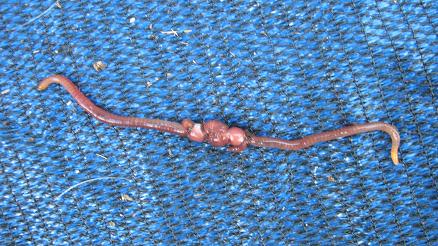
Our New Book
Order the Kindle E-book for the SPECIAL PRICE of only
$3.95
Prices valid till 30.04.2024!
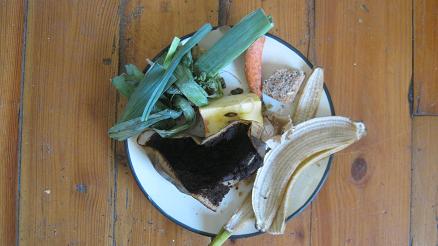

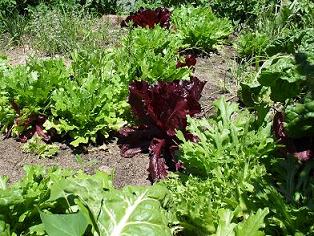


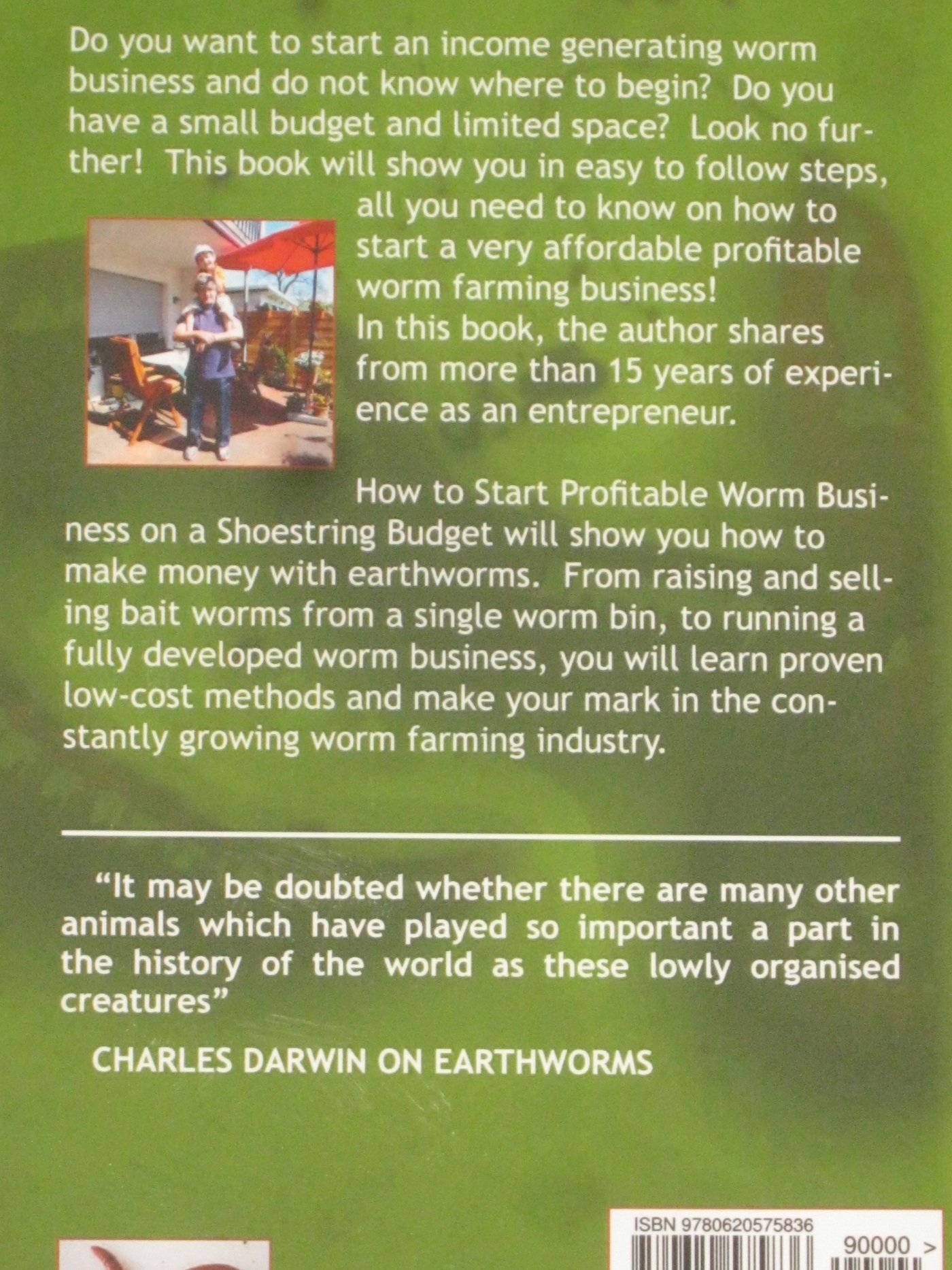

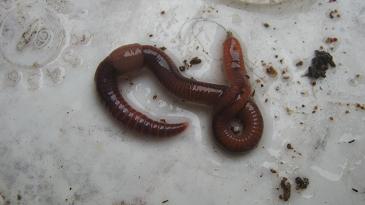
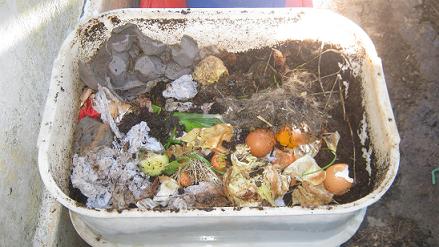

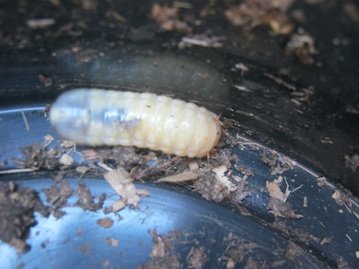
New! Comments
Have your say about what you just read! Leave me a comment in the box below.